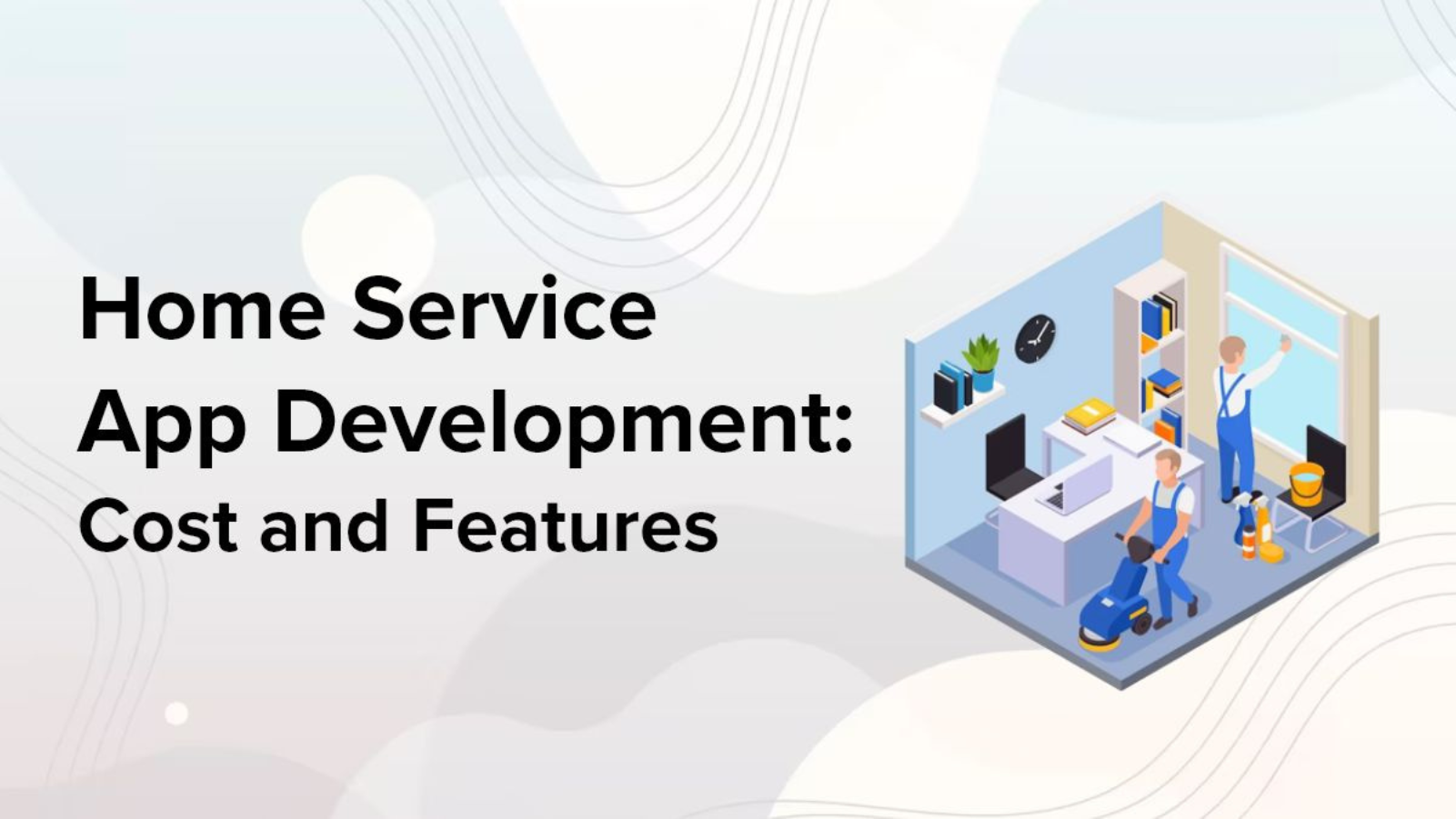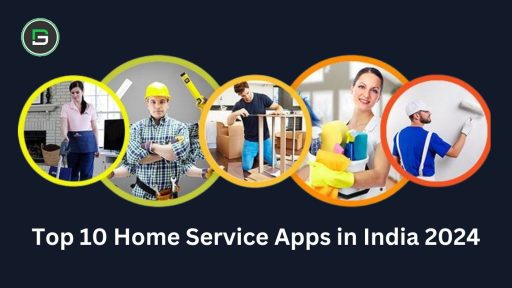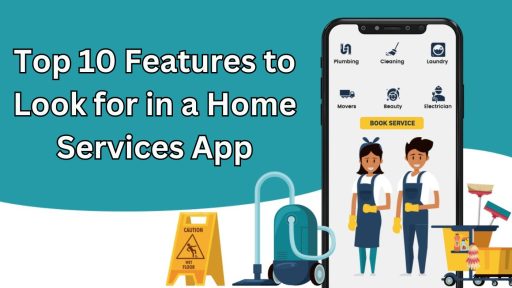In today’s fast-paced world, home service apps have become an essential part of modern living. Whether it’s booking a plumber, scheduling a home cleaning, or requesting an electrician, on-demand home services offer unmatched convenience. As businesses aim to tap into this growing market, one of the first questions that arise is: What is the Home Service App Development Cost?
This article dives deep into the core features, cost factors, development process, and everything entrepreneurs need to know before investing in a home service application. By the end, readers will also discover how to get started with a trusted development partner.
What Is a Home Service App?
A home service app is a digital platform that connects users with various service providers offering at-home services like cleaning, plumbing, carpentry, AC repair, appliance servicing, and more. These apps act as a marketplace where customers can view service providers, schedule appointments, track service progress, and make payments—all through a user-friendly interface.
Think of apps like UrbanClap (now Urban Company), TaskRabbit, and Handy—these platforms are examples of successful home service applications solving everyday problems.
Why Is Home Service App Development in Demand?
The shift towards digital convenience and mobile-first experiences has made home service apps highly popular. Here are a few reasons why businesses are investing in this domain:
- Increased customer demand for on-demand services
- Streamlined operations for service providers
- Scalable business models that support multiple service categories
- Opportunities for recurring revenue through subscriptions and packages
And the best part? The market still has room for niche and regional players to flourish. But before jumping in, it’s crucial to understand the Home Service App Development Cost and what it entails.
Key Features of a Home Service App
1. User Registration & Profile Management
Users should be able to sign up quickly using email, phone number, or social media accounts. They should also be able to manage personal profiles, addresses, and preferences.
2. Service Browsing & Search Filters
The app must allow users to browse a wide range of services categorized by type. Filters based on ratings, availability, pricing, and location enhance user experience.
3. Real-Time Booking System
A flexible calendar and scheduling module is essential. Users should be able to book services at their preferred time slots without hassle.
4. Service Provider Panel
Service professionals need their own dashboard to manage bookings, update availability, view job history, and interact with customers.
5. Geo-location & Tracking
Integrating maps helps users and service providers navigate easily and estimate arrival times.
6. Secure Payments & Invoicing
Multiple payment gateways (credit/debit cards, UPI, wallets) must be included. The system should automatically generate invoices after service completion.
7. In-App Chat and Call Support
Real-time communication builds trust. Chat and call options between users and service providers improve coordination.
8. Ratings and Reviews
Feedback helps maintain service quality and helps new users make informed decisions.
9. Push Notifications
Keep users informed with timely updates, offers, booking reminders, and service statuses.
10. Admin Panel
An admin dashboard is vital for overseeing all activities—user management, service listings, analytics, payment tracking, and support queries.
These features contribute significantly to the Home Service App Development Cost, depending on the level of complexity and customization.
Advanced Features to Enhance User Experience
For those aiming to go beyond the basics, incorporating advanced functionalities can make the app stand out:
- AI-based Service Suggestions
- Voice Search Integration
- Loyalty Programs and Referral Bonuses
- Subscription Models (Monthly or Yearly Plans)
- AR for Home Interior Previews (e.g., cleaning or painting services)
While these features boost engagement, they also increase the Home Service App Development Cost, so businesses should prioritize based on budget and audience needs.
Tech Stack Used for Home Service App Development
Choosing the right technology stack impacts the performance, scalability, and cost of development.
Frontend:
- Flutter (for cross-platform apps)
- React Native or Swift/Kotlin (for platform-specific apps)
Backend:
- Node.js, Express.js
- Laravel, Django (alternative options)
Database:
- Firebase, MongoDB, PostgreSQL
APIs & Integrations:
- Google Maps API (for geo-tracking)
- Stripe, Razorpay (for payments)
- Firebase Cloud Messaging (for notifications)
Using modern tools and frameworks like Flutter can significantly reduce development time and optimize the overall Home Service App Development Cost.
Factors Influencing Home Service App Development Cost
The development cost varies significantly depending on several factors:
1. App Platform
Developing an app for Android or iOS separately is more expensive than using a cross-platform framework like Flutter.
2. Design Complexity
A sleek, custom UI/UX will require more design hours and inflate the cost.
3. Feature Set
The more features and integrations (like chatbots, payment gateways, real-time tracking), the higher the development cost.
4. Team Location
Development rates vary by region:
- India: $20–$50/hr
- Eastern Europe: $40–$70/hr
- USA/Canada: $100–$200/hr
5. Development Timeline
A fast-tracked app delivery may increase the cost due to additional resources.
6. Maintenance & Updates
Ongoing support, updates, and bug fixing contribute to the total Home Service App Development Cost over time.
Estimated Home Service App Development Cost
Here’s a rough cost breakdown depending on the app’s complexity:
| App Type | Estimated Cost | Timeline |
| Basic MVP App | $10,000 – $15,000 | 2 – 3 months |
| Mid-Level App | $20,000 – $35,000 | 3 – 5 months |
| Fully Featured Solution | $40,000 – $70,000+ | 5 – 8 months |
Remember, these estimates vary based on specific project scope, UI design, and business goals. It’s always best to consult with a development company to get a custom quote tailored to your needs.
Monetization Strategies for Home Service Apps
Understanding revenue models helps you plan ROI in line with the Home Service App Development Cost. Common monetization strategies include:
- Commission-Based Model – Charging service providers a commission per job.
- Subscription Plans – Offering premium listings or packages to users or providers.
- Ad Placements – Partnering with related brands to run ads.
- In-App Purchases – Selling home-related tools or extended services.
Why Businesses Should Invest in a Home Service App
Besides the rising customer demand, here’s why businesses should seriously consider developing their own home service app:
- Brand Loyalty: Personalized service and ease of use build customer trust.
- Data Analytics: Learn user behavior and improve marketing strategies.
- Market Reach: Cater to a broader audience with multi-location targeting.
- Operational Efficiency: Automate bookings, scheduling, and payments.
Investing in a custom-built solution may seem costly initially, but the long-term business benefits make it worthwhile. However, to optimize return on investment, it’s crucial to balance feature set and Home Service App Development Cost smartly.
Get Started with a Trusted Development Partner
Looking to develop a feature-rich home service app without overshooting your budget?
GetWidget is your go-to solution for building scalable, responsive, and customized Flutter-based apps. With deep industry experience and a team of certified developers, GetWidget ensures that your application is delivered with quality, speed, and cost-efficiency.
From MVPs to full-fledged solutions, GetWidget tailors development based on your unique business goals—while keeping your Home Service App Development Cost under control. Their reusable widget library also accelerates development time, giving you a head start in this competitive market.
Contact us today and take the first step towards launching your dream home service platform.
Conclusion
Developing a home service app is a smart investment for businesses looking to enter or expand within the on-demand economy. While the Home Service App Development Cost can vary based on features, technology, and region, the potential for ROI is substantial. With the right development strategy and tech partner, launching a seamless, user-friendly, and profitable app becomes not only feasible but also affordable.
Whether you’re a startup founder or an established service provider, now is the time to digitize your business and stay ahead of the curve.
Frequently Asked Questions (FAQs)
1. What is the average Home Service App Development Cost?
The average Home Service App Development Cost ranges between $10,000 and $40,000 for a mid-level application with essential features. However, the final cost depends on the scope, complexity, features, platform choice (iOS/Android), and the location of your development team.
2. Can I start with a basic version and upgrade later?
Absolutely. Many startups begin with a Minimum Viable Product (MVP) that includes core features like booking, payments, and service listings. As user feedback comes in, new functionalities can be added gradually. This phased approach also helps optimize your Home Service App Development Cost over time.
3. How long does it take to build a home service app?
The development timeline typically ranges from 2 to 6 months. A basic app might take around 8–12 weeks, while a fully customized platform with advanced features like real-time chat, geo-tracking, and multi-language support may take longer.
4. Which technology is best for building a home service app?
Flutter is one of the top choices for home service app development. It enables cross-platform compatibility with a single codebase, reducing development time and lowering the Home Service App Development Cost. Other technologies include React Native, Swift (for iOS), and Kotlin (for Android).
5. Is it possible to integrate third-party APIs like Google Maps and payment gateways?
Yes. Most modern home service apps integrate APIs such as Google Maps for location tracking and Stripe, Razorpay, or PayPal for secure payments. These integrations enhance user experience but can slightly increase the Home Service App Development Cost depending on licensing and customization.
6. How can I monetize my home service app?
You can monetize your app through:
- Service commissions
- Subscription packages
- Featured listings for providers
- In-app ads or promotions
Each strategy has different technical requirements that can influence the Home Service App Development Cost.
7. What support do I need after the app is launched?
Post-launch support includes:
- Regular maintenance and updates
- Bug fixes
- Feature upgrades
- Server monitoring
Choosing a reliable development partner ensures these are handled smoothly without significantly adding to long-term Home Service App Development Cost.
8. Can I manage multiple cities or regions through a single app?
Yes. A well-built app can include admin-level features to manage services in multiple cities or regions. This scalability can be built from the start or added in later phases.
9. Is it better to build from scratch or use a pre-built solution?
It depends on your budget and goals. Pre-built solutions offer faster go-to-market at a lower initial cost but may lack customization. Building from scratch provides full control over branding and functionality but may increase your Home Service App Development Pricing initially.
10. Where can I find a trusted team to build my home service app?
You can partner with GetWidget, a leading Flutter development company specializing in scalable and user-friendly mobile apps. They offer end-to-end services—from design to deployment—while ensuring your Home Service App Development Cost remains within budget.





